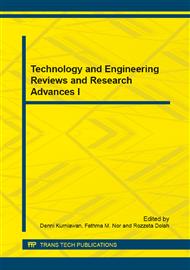p.299
p.304
p.311
p.319
p.326
p.331
p.339
p.344
p.349
TRIZ Business Improvement and Innovation Framework for Malaysian Small and Medium Enterprise
Abstract:
MPC and MyTRIZ have focused on the initiative to expose the Malaysia TRIZ Practitioners with the latest TRIZ development to acquire a wider perspective of TRIZ practices around the world, encourage Malaysia TRIZ Community to share ideas and collaborate with TRIZ experts from other countries, and apply the knowledge acquired to develop various new products, processes, services or systems for international and local customers. Hence, in order to ignite the effort, a framework was developed to mobilize the initiative of adopting TRIZ for the Malaysian industries, focusing primarily on Small Medium Enterprise (SME). This research explored the framework to expand the knowledge of TRIZ for the targeted industries. Most of the inputs were extracted from the experienced academicians and industrial experts who have used TRIZ as part of their core subject. The proposed framework is expected to meet the needs of business owners, which focuses on the outcome of any improvement or innovation initiative. The proposed outcome-based improvement framework is intended to suit the Malaysian environment and be able to perform effectively in terms of increasing innovation in the industries.
Info:
Periodical:
Pages:
349-353
Citation:
Online since:
February 2015
Authors:
Keywords:
Price:
Сopyright:
© 2015 Trans Tech Publications Ltd. All Rights Reserved
Share:
Citation:


